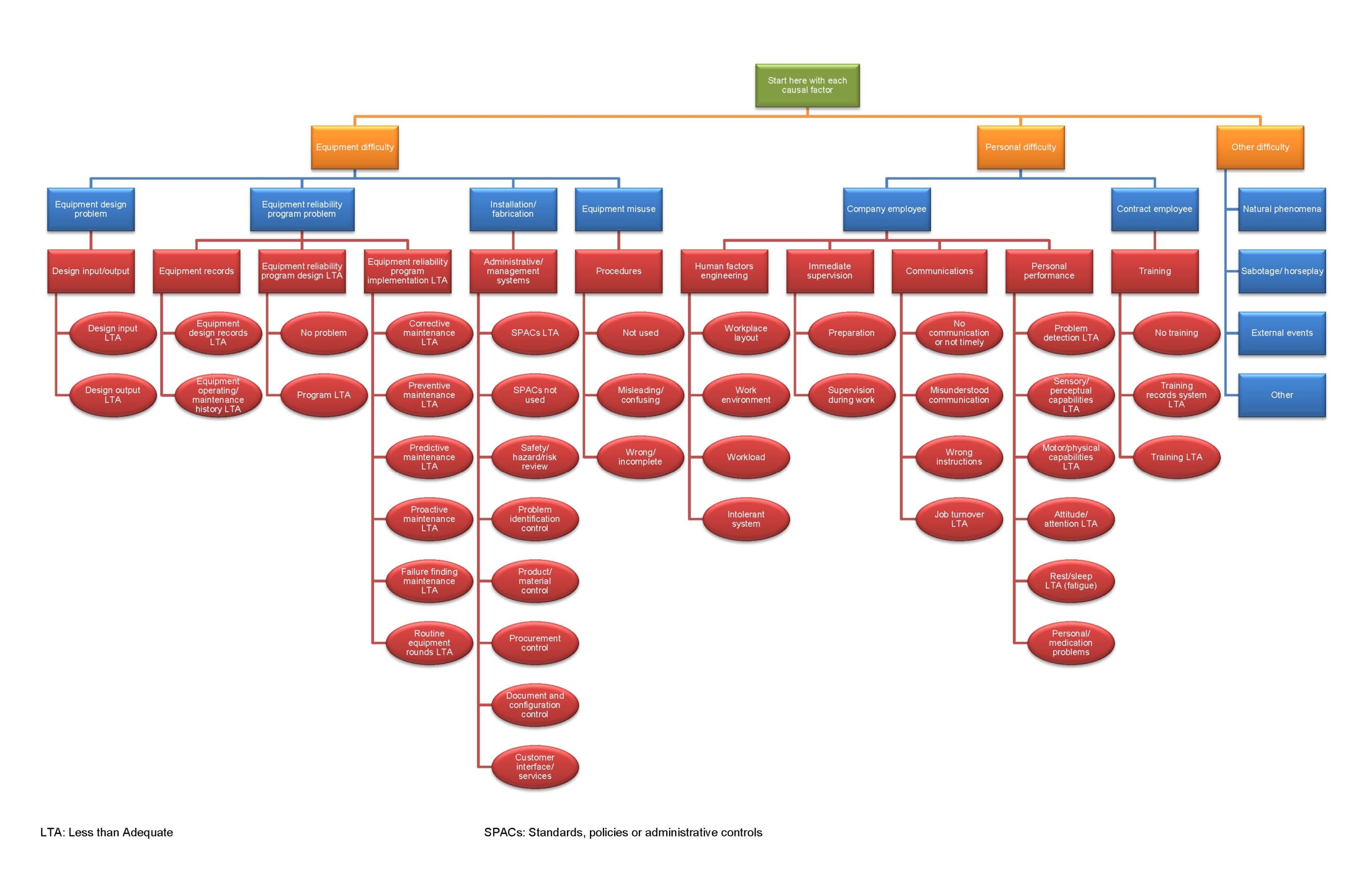Root Cause Analysis
By Lucia Martinez
Simply stated, Root Cause Analysis, “RCA”, is a tool designed to help identify not only what and how an event occurred, but also why it happened. Until a determination is reached as to why an event or failure occurred, workable corrective measures that prevent future events from happening cannot be implemented. Identifying root causes is the key to preventing similar recurrences.
RCA is a four-step process:
1. Data Collection
The first step in the analysis is to gather data. Without complete information and an understanding of the event, the causal factors and root causes associated with the event cannot be identified.
2. Causal Factor Charting
Causal factors are those contributors (human errors and component failures) that, if eliminated, would have either prevented the occurrence or reduced its severity. Causal factor charting provides a structure to organize and analyze the information gathered during the investigation and identify gaps and deficiencies in knowledge. The causal factor chart is simply a sequence diagram with logic tests that describes the events leading up to an occurrence, plus the conditions surrounding the events.
3. Root Cause Identification
After all the causal factors have been identified, root cause identification starts. This step involves the use of a decision diagram called the Root Cause Map to identify the underlying reason or reasons for each causal factor.
The identification of root causes helps in determining the reasons the event occurred so the problems surrounding the occurrence can be addressed.
Figure 1. Root Cause Map

4. Recommendation, Generation, and Implementation
Following identification of the root causes for a particular causal factor, achievable recommendations for preventing its recurrence are generated. Understanding why an event occurred is the key to developing effective recommendations.
If the recommendations are not implemented, the effort expended in performing the analysis is wasted. Organizations need to ensure that recommendations are tracked to completion.
5. Example
Imagine a case when production stopped due to equipment malfunction. The equipment was relatively new and in good condition when the failure occurred.
A typical investigation would probably conclude that operator error was the cause. However, to understand the reasons for the breakdown, a more in-depth analysis should be performed.
In this case, we might ask, “Was the equipment really in good shape? Was the maintenance department doing its job? Was the operator familiar with the equipment?”
The answers to these and other questions will help determine why the breakdown took place and what measures should be taken to prevent a recurrence. For example, recommendations might include establishing a solid maintenance program or conducting training sessions for the operators.
The results of the analysis are usually presented in a Root Cause Summary Table, which organizes the information compiled during the steps mentioned before. Each column represents a major aspect of the RCA process.
-
- In the first column, a general description of the causal factor is presented along with sufficient background information for the reader to be able to understand the need to address the causal factor.
- The second column shows the Path or Paths through the Root Cause Map associated with the causal factor.
- The third column presents recommendations to address each of the root causes identified.
The use of this three-column format shows root causes and recommendations developed for each causal factor.
Event description: equipment failure
Table 1. Root Cause Summary Table

Note. Adapted from Root Cause Analysis Handbook.
About the Author(s)
This article was contributed by Lucia Martinez, Research Specialist for PEC Consulting.
PEC Consulting Group LLC | PENTA Engineering Corporation | St. Louis, Missouri, USA
How can we help you? Get in touch with our team of experts.
